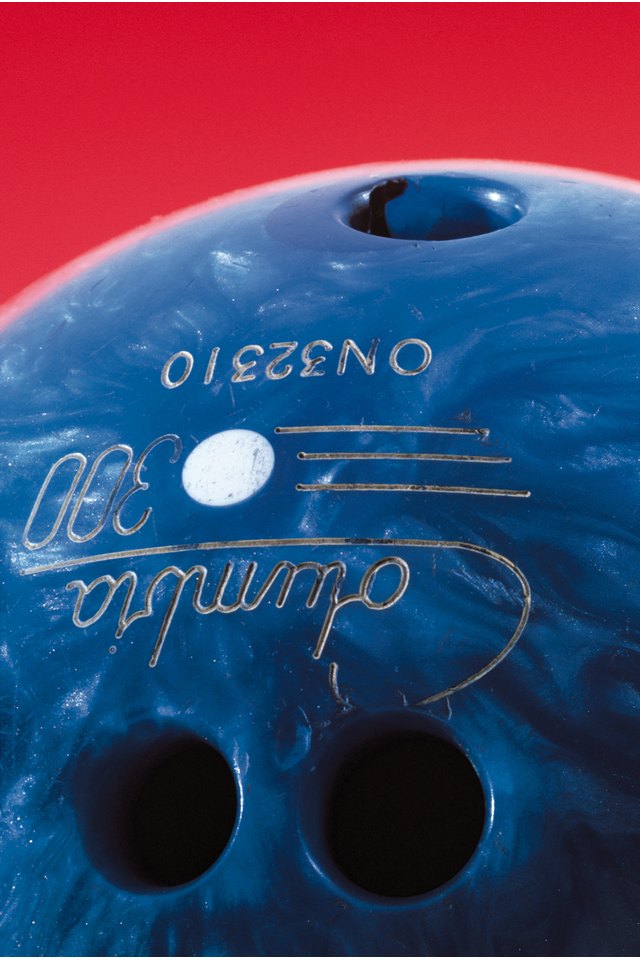Sand Bowling Ball vs. Polished Bowling Ball

Improving your bowling game can require more than simply working on your technique. Those who are truly serious about reaching their peak performance should also take up the practice of resurfacing their balls. Resurfacing is the process of either sanding or polishing bowling balls to alter the way they go down the lane and play to individual bowlers' strengths.
Sanding
One reason people choose to sand bowling balls is to remove the dirt and scratches that balls accumulate with time and use. Such blemishes create inconsistencies in how balls move and should be removed as soon as they are detected. Sanding a bowling ball can also increase either its hook and arc or its snap and skip, depending on what you use for the sanding.
The process can be done using sandpaper of varying grits as well as gray and burgundy scuff pads. Using a low grit sandpaper or a burgundy pad creates the greatest amount of hook and arc. Grittier sandpaper or a gray pad gives balls increased length and hook delay and also smooths their motion.
Polishing
Polishing a bowling ball reduces skid and friction as the ball goes down the lane, allowing it to conserve energy. Balls that are too dull will hook early, using up energy that would otherwise be stored for the back-end reaction.
Balls can be polished with compounds, ball polishes and ball polishes containing slip agents. Of the three, compounds have the most moderate effect, while a ball polish containing a slip agent will provide the maximum length, least hook and sharpest break point.
When to Resurface
A ball should be resurfaced when you notice a groove or indentation in it, or roughly every 30 games. While both types of resurfacing can be accomplished by hand, it is recommended that you use a ball spinner for a faster, more efficient process. These generally range from $300 to $2,000, though many pro shops offer the use of their spinners.
Considerations
While resurfacing during practice play is totally acceptable, the United States Bowling Conference (USBC) prohibits changing the surface of balls during sanctioned league or tournament competitions. As such, be sure that your ball is conditioned to your liking before entering official competitions.
It is recommended that less experienced bowlers consult professional help for resurfacing, particularly sanding. Only once you are familiar with how it is properly done should you attempt your own resurfacing.
Progressively making small changes to your ball's surface is generally preferred to large, one-time overhauls. Progressive changes allow you to address your ball's specific issues.
References
Writer Bio
Karl Arney graduated with a B.A. in journalism from Temple University in 2007. His early published work appeared in "Where? Philadelphia Magazine" and "Philadelphia People Magazine." He teaches English in China, where he also writes columns for the "China Daily" newspaper.
